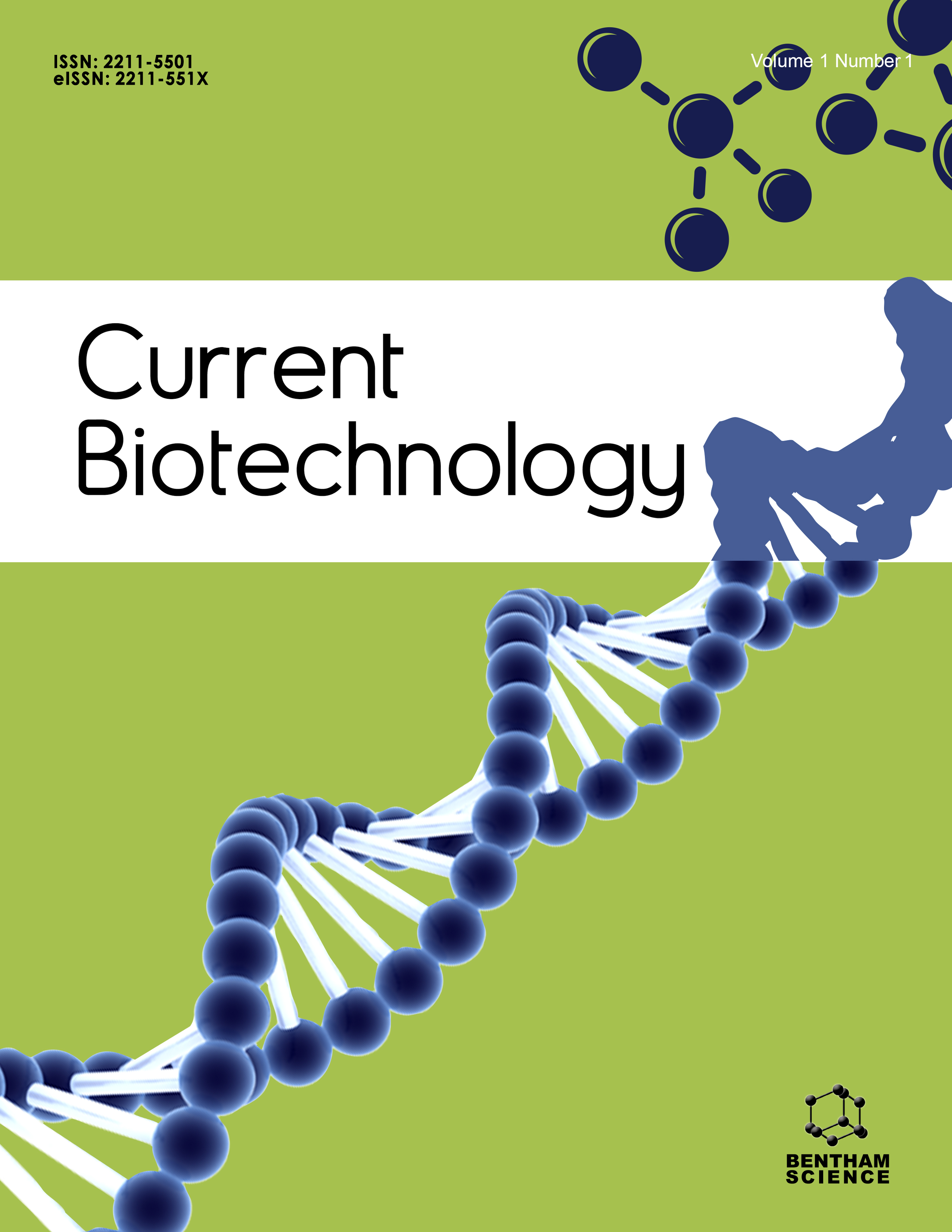- Home
- A-Z Publications
- Current Biotechnology
- Previous Issues
- Volume 9, Issue 4, 2020
Current Biotechnology - Volume 9, Issue 4, 2020
Volume 9, Issue 4, 2020
-
-
Conventional Plastics' Harmful Effects and Biological and Molecular Strategies for Biodegradable Plastics' Production
More LessAuthors: Felipe S. Edaes and Cleide B. de SouzaBackground: Plastic materials are ubiquitous and, despite the great benefits and advantages that the materials provide to human beings and society, their harmful effects are remarkable. Plastics’ ingestion is harmful and can occur through microplastics and their by-products (BPA and DEHP). It can trigger health problems. Also, the material decomposition time is significant and consequently, plastic waste accumulates i Read More
-
-
-
Xanthine Oxidase Perspective in Human Health
More LessAuthors: Santwona Dash, Sabita Pattanayak, Barsarani Jena, Manasa K. Panda and Yengkhom D. SinghXanthine oxidase (XO) is an essential enzyme in catalyzing the hydroxylation of hypoxanthine to xanthine and uric acid in the kidney. Excessive formation of uric acid can lead to hyperuricemia (HUA), a condition caused by excess uric acid contamination in the blood. HUA is responsible for various diseases in the body, such as gout, cardiovascular, and renal failure. It is also associated with numerous inflammatory diseases Read More
-
-
-
Microbial Biofilms and Biotechnology – Some Perceptions
More LessThe review is an attempt to introduce the readers in brief about biofilms and their implications as well as some new perceptions in biotechnology. Biofilms are adherent microbial communities, which are developed on submerged surfaces in aquatic environments. Biofilms play a significant role in exopolymer production, material deterioration and also cause harmful infections. Further, the role of corrosion causing biofilm bacteri Read More
-
-
-
Nuclear Factor-Y (NF-Y), the Key Player in Plant Growth and Development: Prediction and Characterization of Vanilla planifolia
More LessAuthors: Saavi Arora, Devina Ghai and Jaspreet K. SembiBackground: V. planifolia is of tremendous commercial importance as a source of an important flavor, vanilla, which is the backbone of the culinary and perfumery industry. Hence, efforts to ease cultivation and promote growth in this plant are the need of the hour. Nuclear factor-Y (NF-Y) gene family, a class of vital transcription factors, plays a pivotal role in a large number of developmental processes. Objective: The present st Read More
-
-
-
Construction of Phylogenetic Tree of Coat Protein Gene Encoded by Begomoviruses to Detect Yellow Mosaic Viruses Infecting Soybean in Satna
More LessAuthors: Jyoti Pandey, Rajesh Garg and Ashwini A. WaooIntroduction: Soybean is an essential legume crop that has grown mainly in Madhya Pradesh. It supplies over 25% of the vegetable oil requirement of the country and a substantial quantum of protein-rich by-product for animal feed requirements. Viral diseases caused by Begomoviruses, it is transmitted by whiteflies (Bemisia tabaci), responsible for yield reduction and economic losses in soybean production in Madhya Pradesh Read More
-
-
-
Evaluating the Safety and Toxicity of a Modified Dextran-based Biopolymer as a Hemostat
More LessAuthors: Narges Maleksabet, Mohammadreza Masoumian and Asieh AramvashBackground: As an effective alternative to conventional suture techniques, topical hemostatic agents are widely used to control bleeding and close wounds in surgeries. Objective: This study was conducted to evaluate the efficacy and safety of a novel hydrogel hemostat that is easy to use in an applicator under normal conditions according to ISO 10993. Methods: The safety of DexGel, a natural surgical hemostat containing main Read More
-
-
-
Phytochemical Extracts of Leucas aspera and Dahlia pinnata Exhibit Antimicrobial Properties in Escherichia coli and Enterococcus faecalis
More LessBackground: Phytochemicals such as tannins, alkaloids, flavonoids, and peptides have been found to have antimicrobial activity against a variety of bacterial strains. Objective: However, optimal extraction procedures for these phytochemicals and their efficacy evaluation against certain pathogenic bacterial strains remain unclear. Methods: Therefore, in this study, phytochemicals from Leucas aspera (L. aspera) and Dahli Read More
-
-
-
Green Synthesis of Copper Oxide Nanoparticles (CuO NPs) From Aqueous Extract of Seeds of Eletteria Cardamomum and Its Antimicrobial Activity against Pathogens
More LessBackground: The Nanomaterials/Nanoparticles are of great interest today because of their small size and large surface area, modular and easily tunable morphology and size. Copper oxide (CuO) nanoparticles are widely used in dye-sensitized solar cells (DSSCs). Research on the synthesis and properties of metallic nanomaterials is a growing field of nanotechnology due to the use of nanoparticles in the scientific, technical, phar Read More
-
-
-
Evaluation of in-vitro Antioxidant Potential, and Screening and Characterization of Phytochemicals Using hydroethanolic Leaf Extract of Caesalpinia Pulcherrima
More LessIntroduction: Novel Therapeutic Phytochemical studies are based on the use of plants in the production of drugs. The present study was carried out to perform the screening of phytochemicals and their quantitative analysis to assess in-vitro antioxidant activities of the hydroethanolic leaf extract of Caesalpinia Pulcherrima. FT-IR and GC-MS analyses of hydroethanolic leaf extract of Caesalpinia pulcherrima were also conducted. M Read More
-
Most Read This Month
Article
content/journals/cbiot
Journal
10
5
false
en


